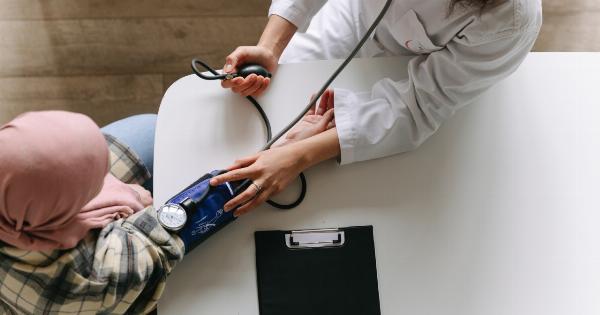When people think about taking care of their heart, they often focus on cardiovascular exercise and healthy eating habits. However, one of the most overlooked aspects of heart health is the health of your legs.
Your legs play an important role in keeping your cardiovascular system healthy, and they can also have a big impact on other areas of your health, such as cancer, cholesterol, and blood pressure. In this article, we’ll explore the connection between healthy legs and a healthy heart, and how you can take care of your legs to keep your cardiovascular system in top shape.
The Connection Between Leg Health and Heart Health
The connection between leg health and heart health might not be immediately obvious, but it all comes down to the role that your legs play in your body’s circulation.
Your heart is responsible for pumping blood throughout your body, but it’s your legs that help to facilitate that circulation. When you walk, run, or engage in other forms of physical activity, your leg muscles contract and relax, which helps to move blood through your veins and back up to your heart.
However, if you have poor leg health due to a sedentary lifestyle or other conditions, it can put a strain on your cardiovascular system.
When your legs aren’t working as efficiently as they should be, your heart has to work harder to pump blood through your body. This can lead to a variety of health problems, including:.
Cancer
According to the American Cancer Society, there is strong evidence to suggest that regular physical activity can help to reduce the risk of certain types of cancer, including breast, colon, and lung cancer.
In fact, one study found that women who walked for at least 7 hours per week had a 14% lower risk of breast cancer compared to women who walked for less than 3 hours per week.
While the exact mechanisms behind this protective effect aren’t fully understood, it’s thought that regular physical activity can help to lower levels of inflammation in the body, which is known to play a role in the development of cancer.
Additionally, physical activity is thought to help regulate hormones in the body, which can also affect cancer risk.
When it comes to leg health specifically, one study found that women who spent more time sitting had a higher risk of developing breast cancer, even if they engaged in regular physical activity.
This suggests that sitting for long periods of time can have a negative impact on leg health, which can in turn impact cancer risk.
Cholesterol
Cholesterol is a waxy substance that can build up in your arteries, leading to a variety of health problems, including heart disease and stroke.
While many people think of cholesterol in terms of diet, regular physical activity can also play a role in managing your cholesterol levels.
When you engage in physical activity, your body uses stored fat as a source of energy, which can help to lower levels of “bad” cholesterol (LDL) in your bloodstream.
Additionally, physical activity is thought to help increase levels of “good” cholesterol (HDL), which helps to remove excess cholesterol from your bloodstream and transport it back to your liver for processing.
When it comes to leg health specifically, one study found that people who engaged in regular physical activity had higher levels of HDL cholesterol compared to people who were sedentary.
Additionally, people who had strong leg muscles (as measured by a simple leg press test) were found to have lower levels of LDL cholesterol and triglycerides (another type of fat in the blood) compared to people with weaker leg muscles.
Blood Pressure
High blood pressure (hypertension) is a common condition that can increase your risk of heart disease, stroke, and other health problems.
Regular physical activity is one of the most effective ways to lower blood pressure naturally, and it can also help to prevent hypertension from developing in the first place.
When you engage in physical activity, your heart has to work harder to pump blood through your body, which can help to strengthen the cardiovascular system in the long run.
Additionally, physical activity is thought to help lower levels of stress hormones in the body, which can contribute to hypertension over time.
When it comes to leg health specifically, one study found that people who engaged in resistance training (such as weight lifting or bodyweight exercises) had significantly lower blood pressure compared to people who did not engage in resistance training. This effect was even more pronounced in people who had weaker leg muscles at the start of the study.
Taking Care of Your Legs for Better Health
Now that you understand the importance of leg health for your overall health, it’s time to start taking care of your legs. Here are some tips for keeping your legs healthy:.
Stay Active
Regular physical activity is one of the best things you can do for your leg health. Aim for at least 150 minutes of moderate-intensity activity (such as brisk walking) per week, or 75 minutes of vigorous-intensity activity (such as running) per week.
Strength Train
In addition to cardiovascular exercise, strength training is also important for leg health. By building strong leg muscles, you can improve your circulation, reduce your risk of injury, and even improve your balance and overall mobility.
Aim to strength train at least 2-3 times per week, focusing on exercises that target your legs (such as squats, lunges, and leg presses).
Stretch Regularly
Stretching is important for maintaining flexibility and reducing your risk of injury, especially as you age.
Incorporate stretching into your routine at least a few times per week, focusing on stretches that target your legs (such as hamstring stretches or calf stretches).
Elevate Your Legs
If you spend a lot of time sitting or standing, try to elevate your legs whenever possible. This can help to improve circulation and reduce swelling and discomfort in your legs.
Try propping your legs up with pillows while you watch TV or work on the computer, or consider using a footrest at work.
Wear Compression Stockings
If you have varicose veins or other circulation problems, consider wearing compression stockings. These stockings apply pressure to your legs, which can help to improve circulation and reduce discomfort.
Talk to your doctor about whether compression stockings are right for you.
Eat a Healthy Diet
A healthy diet can also play a role in leg health. Aim to eat a diet that is rich in fruits, vegetables, whole grains, lean protein, and healthy fats.
Avoid processed foods and foods that are high in saturated and trans fats, which can contribute to inflammation and other health problems.
Avoid Excessive Alcohol Consumption
Excessive alcohol consumption can have a negative impact on leg health (as well as heart health more broadly). Limit your alcohol consumption to no more than one drink per day for women or two drinks per day for men.
The Bottom Line
As you can see, leg health is an important aspect of overall health and wellness.
By taking care of your legs through regular physical activity, strength training, stretching, and other healthy habits, you can help to reduce your risk of a variety of health problems, including cancer, cholesterol, and blood pressure issues. Talk to your doctor about other steps you can take to improve your leg health and protect your cardiovascular system for years to come.





























